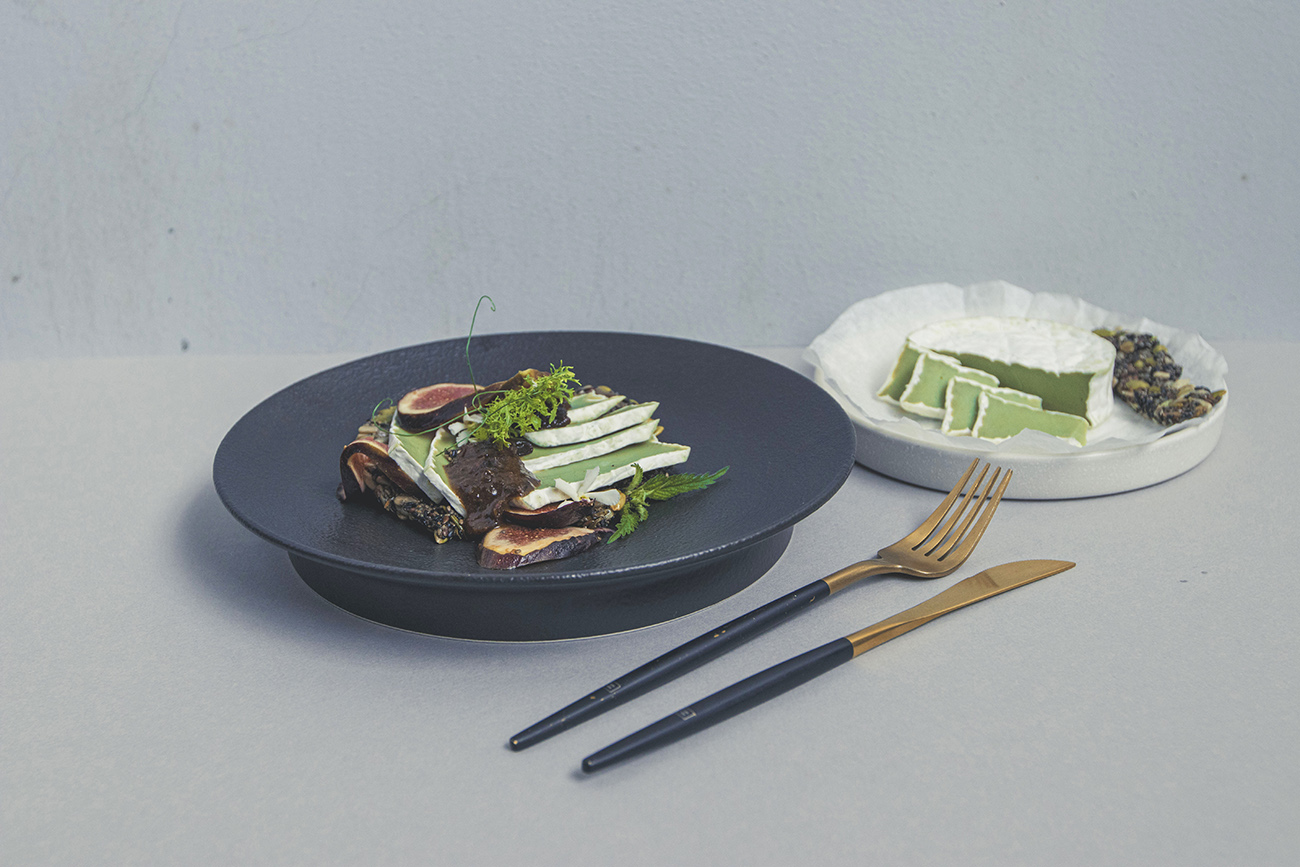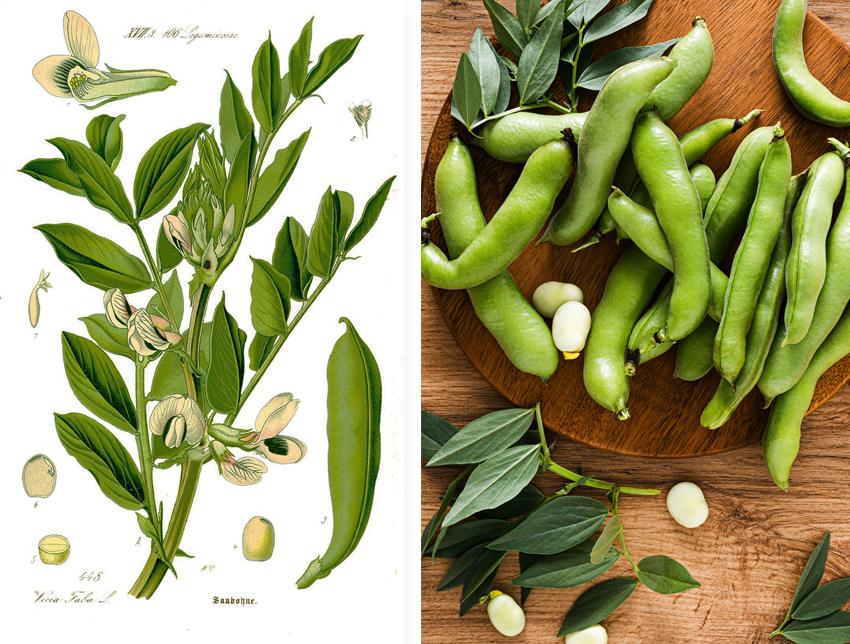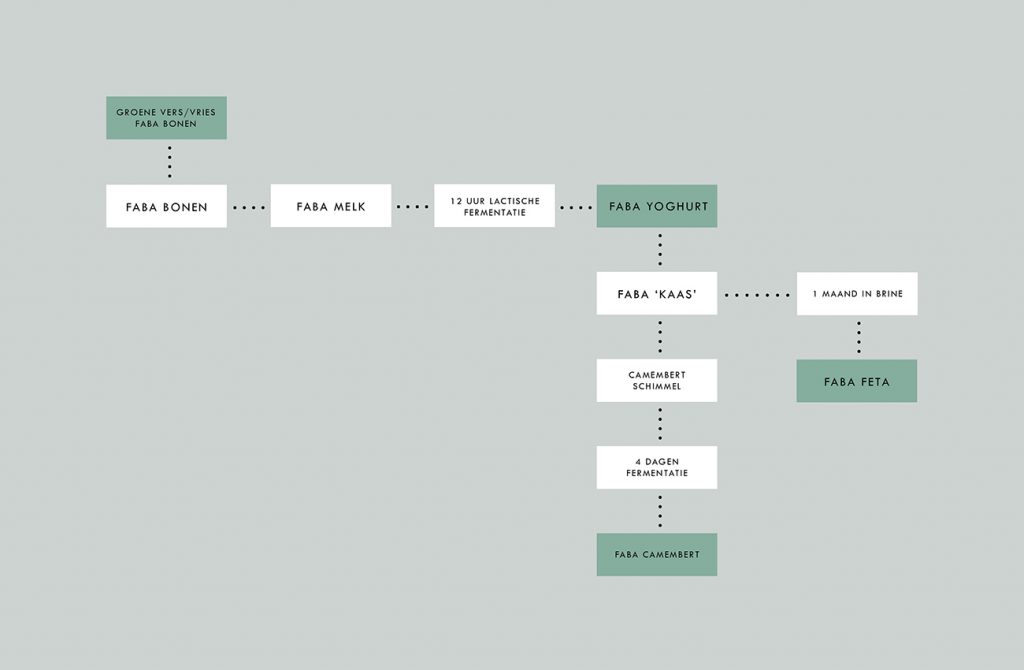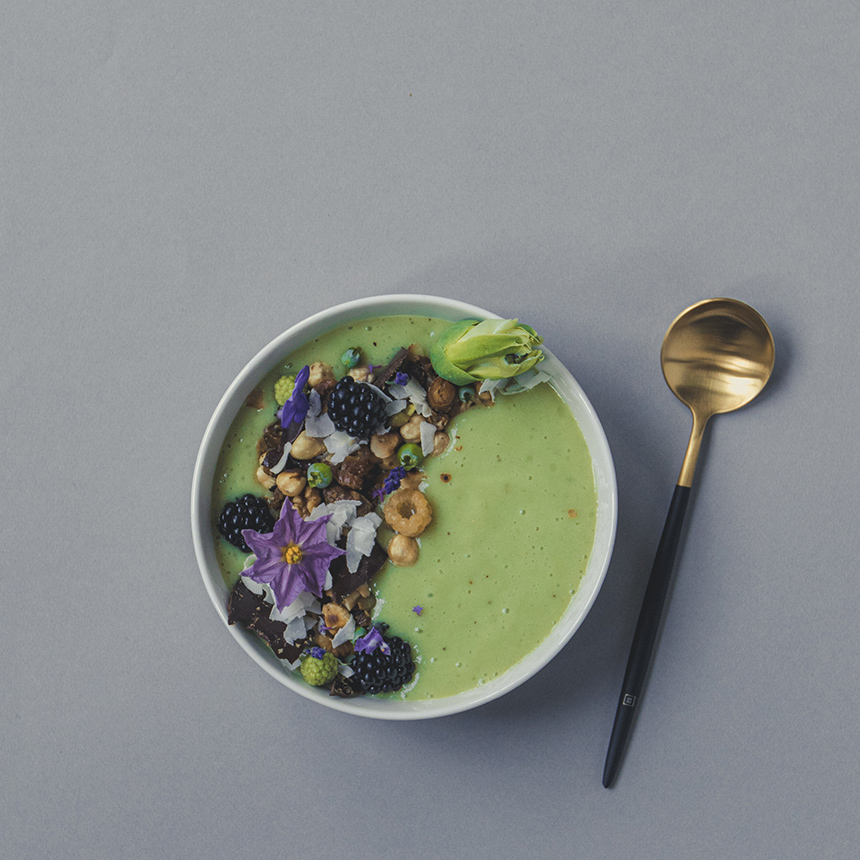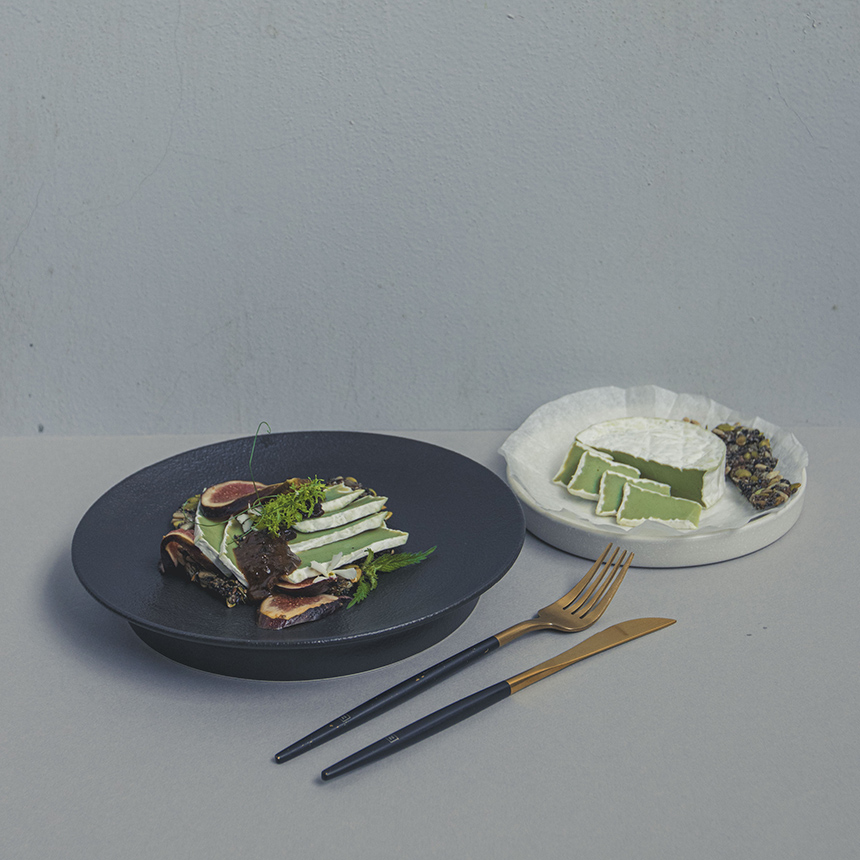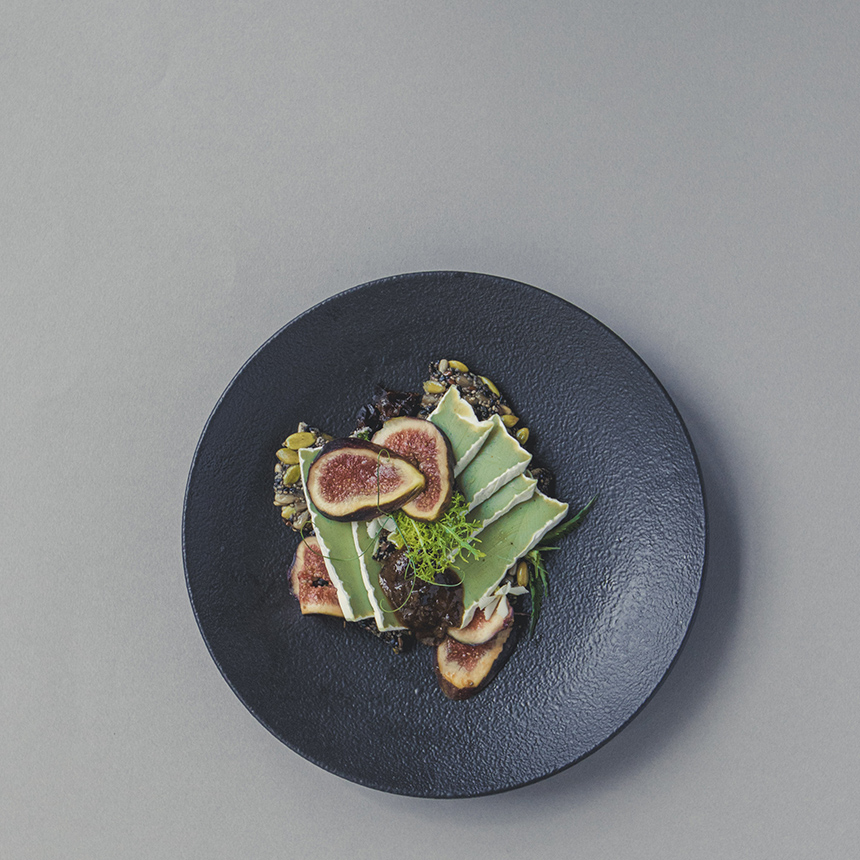How can the green protein transition serve as a boost for local biodiversity? How can our diet improve soil quality? How can we still enjoy the specific taste of dairy products while on a plant-based diet? How do we select crops that are more resilient to the future climate conditions? And how do we integrate these into our daily dishes?
The Green Bean: Research.
Green protein, finally green in every way.
In collaboration with Wageningen University, The Eatelier researched how the protein transition can serve as a boost for local biodiversity and soil quality through the use of beans.
We investigated Dutch faba beans for cultural and historical relevance, resilience to future climate conditions and nutritional values as meat or dairy substitute. In addition, we analyzed classical fermentation techniques used for animal dairy products such as yogurt and cheese cultures, and applied these techniques to milk made from fresh, green faba beans, also known in Dutch as ‘tuinbonen’, a familiar local staple.
This resulted in a new production method to process these beans and three new products; a fresh green faba yogurt, faba feta and fabambert (faba camembert).
Product development in collaboration with Ekoplaza / Udea and Foodlab Proef
Research:
Rotation crop and soil quality.
Faba beans are an effective rotational crop, used to control various diseases, such as root disease in cereals. This practice improves soil fertility and preserve and support microorganisms in the soil. In addition, faba beans contribute significantly to additional fixed nitrogen and carbonization in the soil, which will then be available for the other crops in the rotation scheme.
The faba bean has great potential to be a good crop rotation partner for wheat fields and even improves the protein content in wheat after rotation. Additionally, wheat-faba crop rotation was found to have low economic risks compared to other crop rotations, since both crops are marketable.
Protein composition and health benefits.
The faba bean has a complete essential amino acid profile and relatively higher protein content than other beans. Faba beans contain on average more isoleucine, leucine and lysine than the common bean Phaseolus vulgaris. Faba beans have a high fiber content and the richness and diversity of bioactive compounds giving it the potential to replace soy protein and other animal proteins. Faba beans are known to lower LDL cholesterol levels in the plasma and may have benefits for Parkinson’s patients. Some studies showed some improvements in symptoms after consistent consumption of faba beans (JM, 1993).
During the research, these interesting aspects emerged, including a complete amino acid profile in plant sources. This requires some explanation; In products of animal protein, all 9 essential amino acids are already naturally present. These are amino acids that are essential, but which the body cannot produce itself and must obtain through diet. In the case of plant-based foods with a high protein content, some of these amino acids are often missing and 1 crop will need to be supplemented by another.
This magical combination can be found in grains and beans. Separately wonderful products but incomplete amounts of amino acids, however, when combined it becomes a complete animal protein substitute. Coincidentally, this turns out to be the same combination of crops that are ideal for crop rotations. This realization motivated us to strive for a combination of these two ingredients in the use of the final product.
In order to stimulate this way of (ingredient) use, we have looked at a substitute for dairy products where there is already a custom of eating this together with grain products. For instance, cheese on bread, pasta with cheese or breakfast cereals in yogurt. We took on the challenge to create a kind of dairy and cheese substitute that could take the place of animal protein products in terms of use and specifically taste, but is completely plant-based
Product Process Flow.
To briefly go into the production process; from fresh, green faba beans, we made a faba milk. This milk is then fermented with a yogurt culture, a so-called lactic fermentation. Once there is a yogurt, we can continue to add cheese cultures, in our case to create a feta cheese and a Camembert, and let them ripen.
The magnificent, fresh, green color of the final product is a natural result of using fresh, green beans as a starting ingredient.





